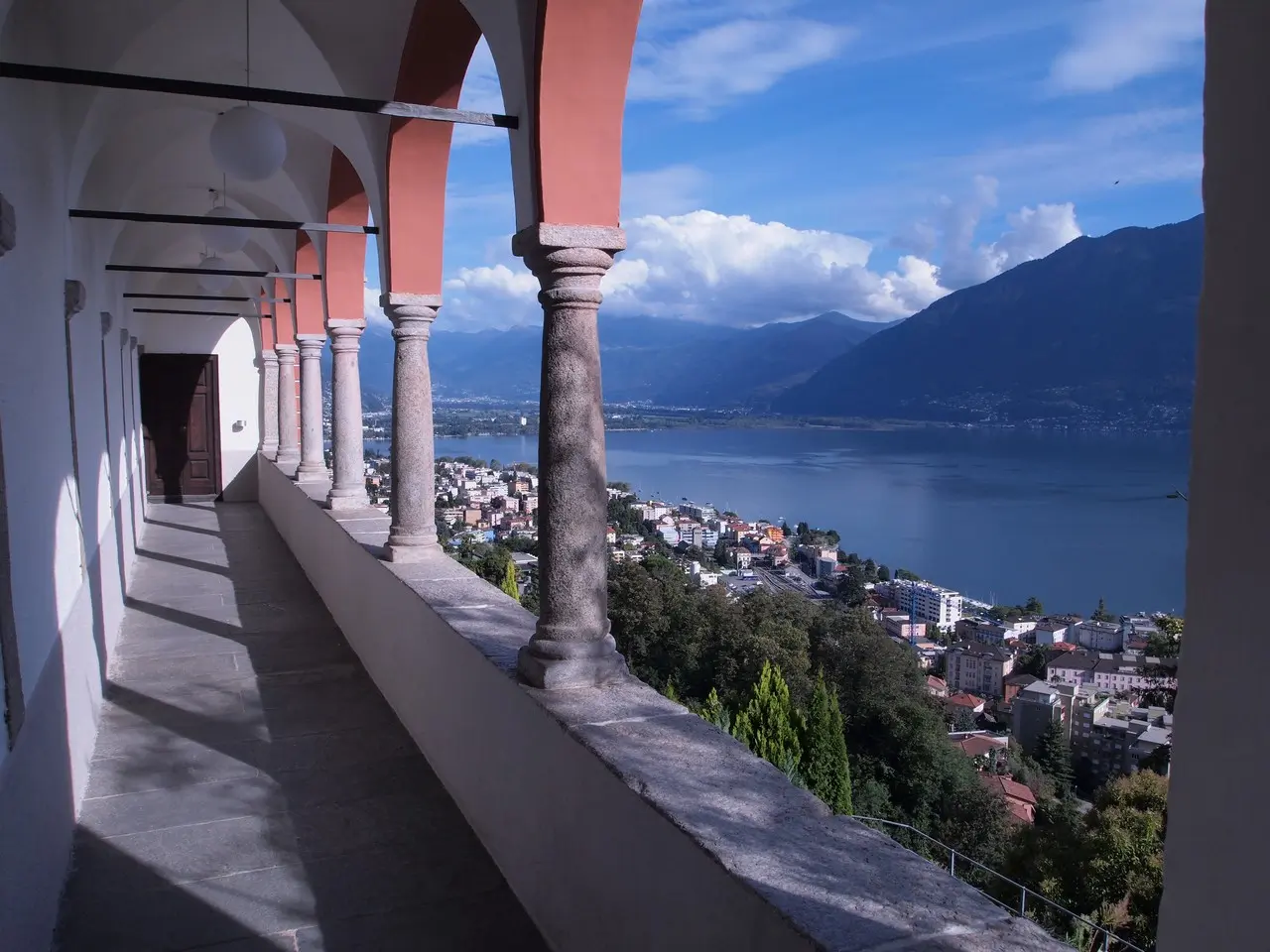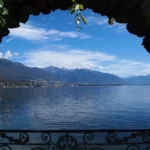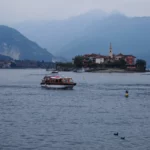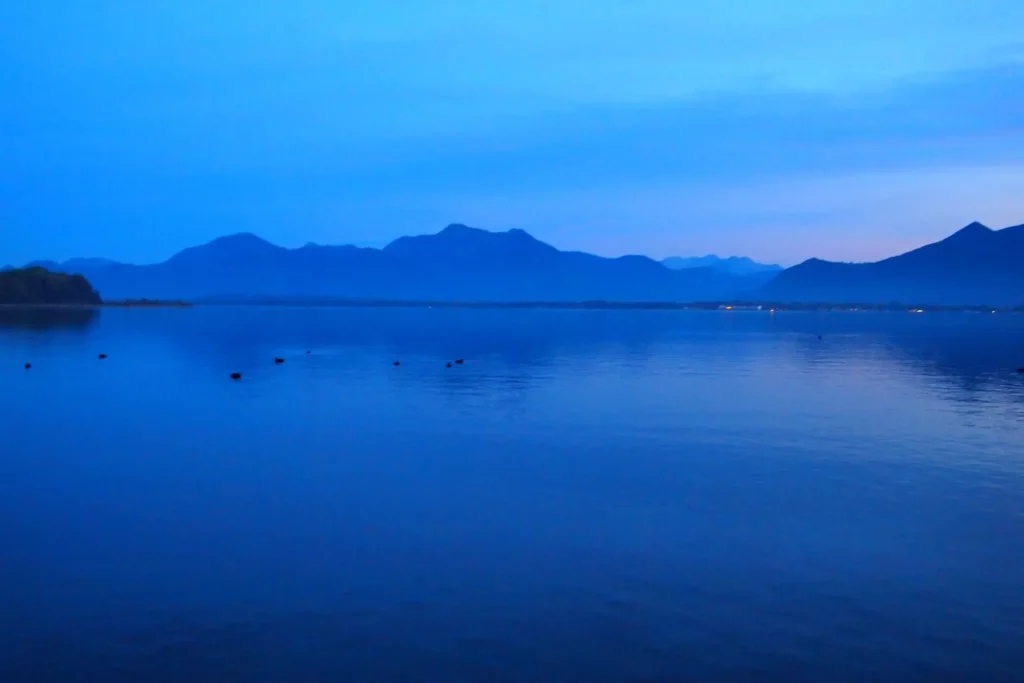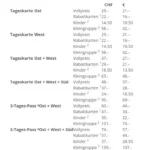Last Updated on 11/09/2023
For several years we looked for the possibility of going to Ticino, and finally it worked out and travelled to Locarno.
Accommodation in this region is very, very difficult, unless you go there in winter. We decided to go to Maggiore at the end of September, when schoolchildren and students return to their textbooks, families with small children prefer warm seas in the Indian summer and only European pensioners remain.
Lake Lugano attractions map
Ticino attractions map. Locarno, Bellinzona and valleys
Ticino guest cards and public transport Ticino
Ascona / Locarno. 2. Island Brissago
Verzasca, Centovalli Valley, Valle Maggia
5 best viewpoints of Lake Lugano
Lake Lugano. 2. Lugano, Gandria, Melide, Carona
Lake Lugano. 3. Morcote, Caslano
Lake Maggiore Attractions of Italian part
The weather was very rainy, but we managed to see quite a lot. And despite the very beautiful nature, our common opinion was “once is enough.” Active development of the surrounding hills, a lot of vacationers, excessive prices even for Switzerland, full roads. This can ruin even the most beautiful places very quickly.
We would like only to return in good weather to the Verzasca and Centovalli gorges and explore the Maggia gorge. But we wouldn’t like to stop in Locarno / Ascona.
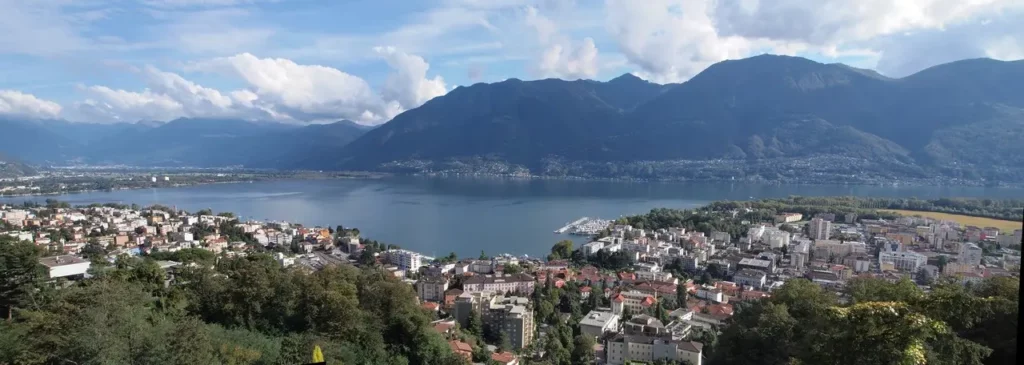
Public transport in the region
The railway runs along Lake Maggiore on the east side through Gambarogno, Luino and Laveno.
There is also the Centovalli railway from Locarno to the Italian Domodossola through the gorge (more on this railway – on another page).
There is no direct bus service along the west coast. You can take a bus to Brissago and then take a bus to Ascona / Locarno. But it is long, inconvenient.
Driving along the lake by car is also quite tiring. The road is narrow, very winding, the real speed is almost everywhere max. 50 km / h.
Thus, it takes so much time to get to Italian part, regardless of the type of transport, that to visit Stresa, the Borromean Islands, Orta, it is better to choose a place to accomodation closer to them. Day trips from Locarno do not make deep sense.
But and without the Italian part, you can easily find what to see for 2 weeks.
To explore the area around Ascona / Locarno you need to:
- one day island of Brissago + Ascona + Locarno + cable car to Cardado
- one day for each gorges (Centovalli, Maggia, Verzasca)
- 1 day Bellinzona,
- 1 day Monte Tamaro
- 3-4 days Lugano (Lugano + Gandria + funicular to San Salvatore, Monte Generoso, Morcote, etc.).
Locarno attractions

Locarno is a rather uninteresting city. Two hours to explore the it is more than enough. Another couple of hours can be taken to the ascent up to the Church of Madonna del Sasso and on the cable car up the mountain.
The old town is Piazza Grande and the narrow streets that go up steeply from it to Via Cittadella and then to Via Borghese.
Piazza Grande is one of those squares where you won’t stay for a long time: either it is a square, or just a pedestrian street. There are shops and restaurants under the arcades. But on the square itself there is nowhere to rest, only a couple of stone benches stand alone. Therefore, those who are not interested in restaurants just walk by, taking a couple of snapshots on duty.
Various events are regularly held on the square. Therefore, you can often see metal fences and chairs piled up / placed for concerts.
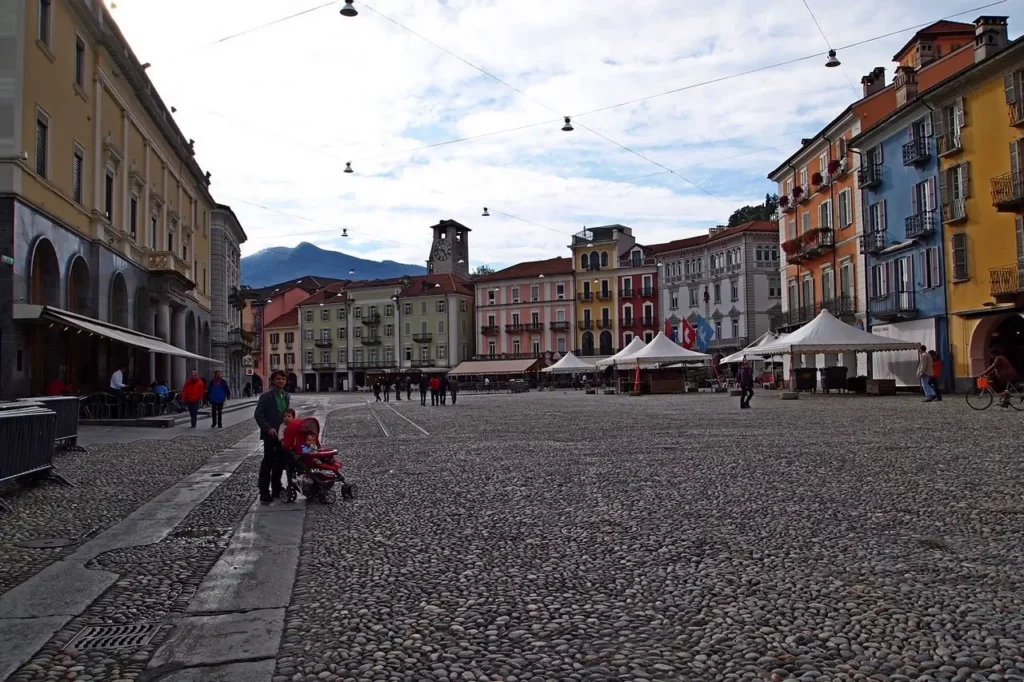
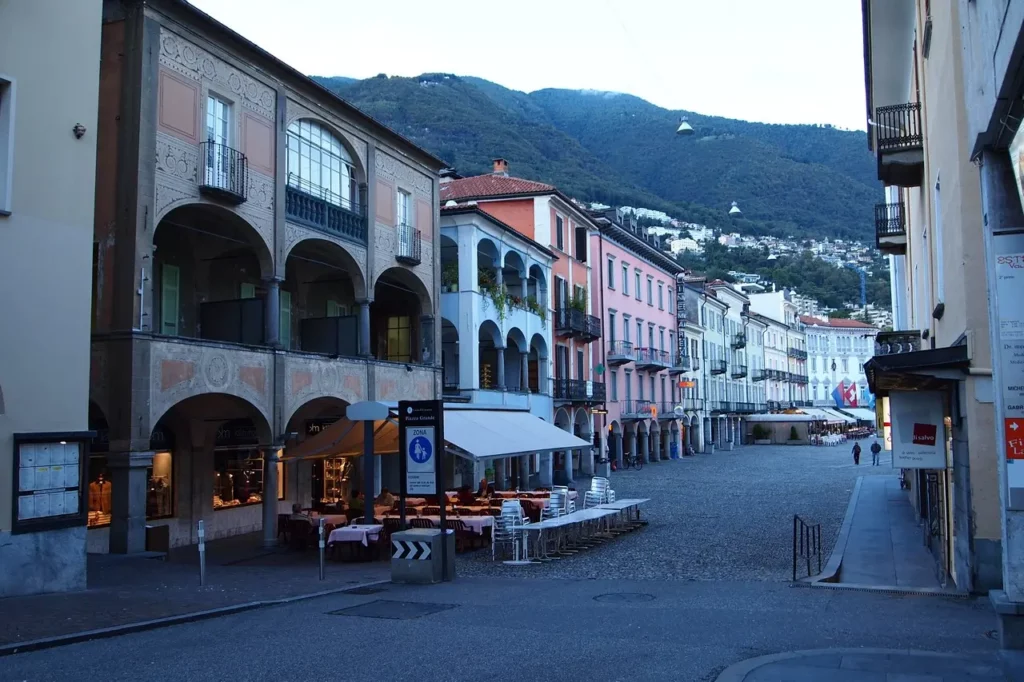
The side streets are not particularly beautiful either. The Locarno information booklet promises charming courtyards inside, but you have to know where to look for them. In my attempts to find them all the time I came across private signs.
Piazza Grande leads to the castle – Castello Visconteo.
The castle was built in the 12th century on the site of the 10th century fortification. In the middle of the 14th century it passed on to the Visconti family in Milan.
The modern appearance of the castle took shape in the 15th century, when it was expanded. When the Confederates seized power, part of the building was destroyed.
The remaining half now houses an archaeological museum. The most valuable part of the exhibition is the collection from the Roman period.
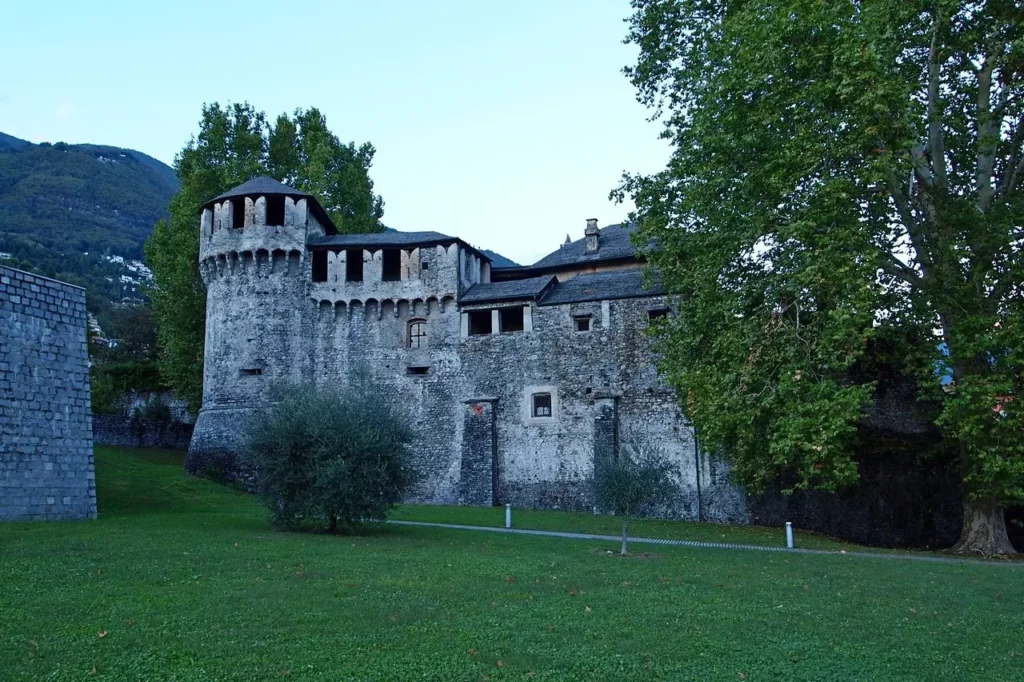
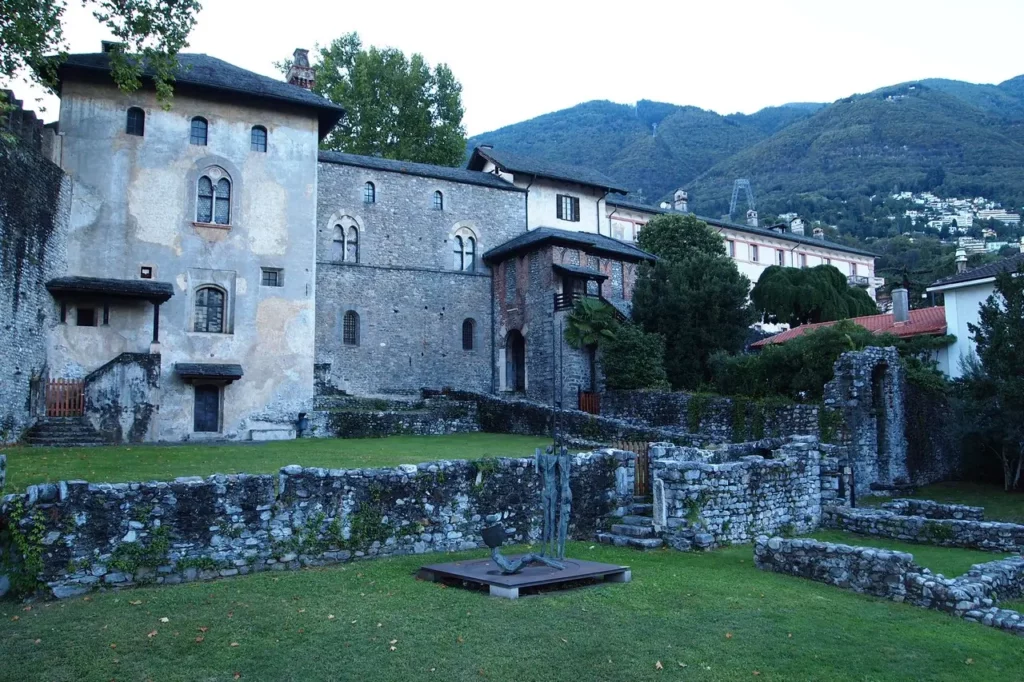
Churches
Interesting are:
- church of st. Francesco (14-16 centuries) next to the castle
- the oldest Church of San Vittore in Locarno with preserved frescoes (12th century) near the station
- and the baroque New Church (Chiesa Santa Maria Assunta, Chiesa Nuova, 1636, architect Orelli).
But the main attraction is the recently restored pilgrimage church of Madonna del Sasso. The church was built at the end of the 15th century in the place where St. Mary appeared to two Franciscan monks. The facade was rebuilt in the 19th century.
On the photo you can see the church above, near the bridge, and a row of 10 white chapels from below.
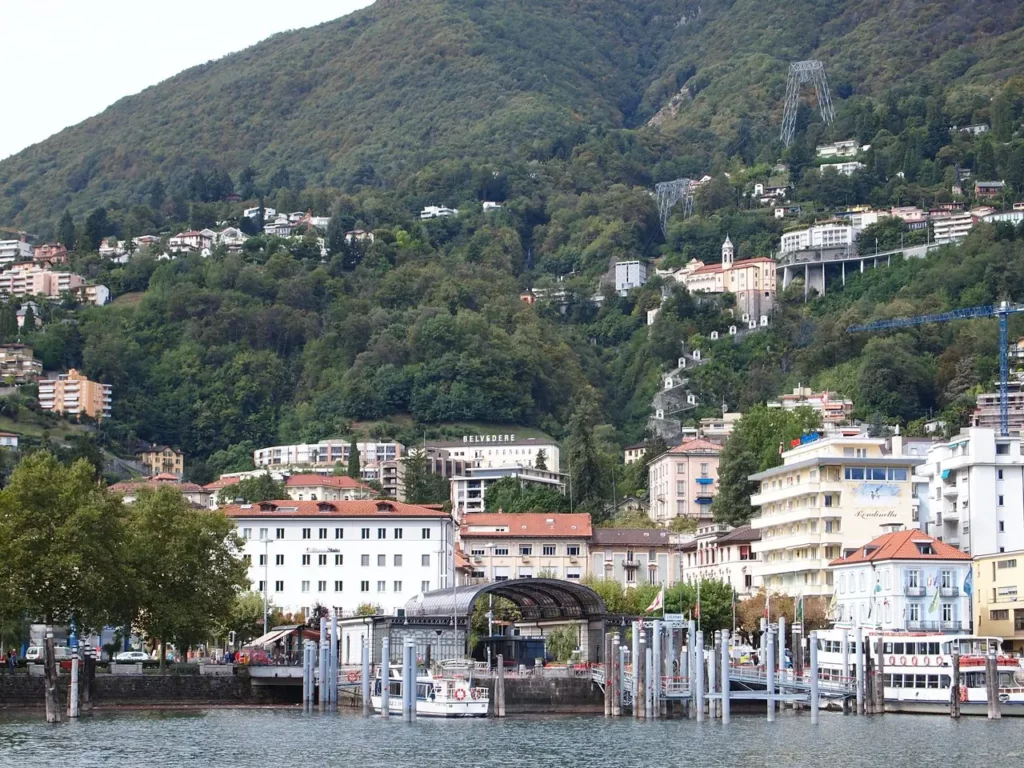
The most interesting are:
- paintings by Bramantino (who worked in Milan at the same time as Leonardo da Vinci) “Flight into Egypt”,
- miraculous statue of the Madonna of the 15th century
- and wooden sculptural groups from the same period.
It is worth going up to the church at least for the sake of the views from above. It is better to choose some kind of transport – a bus (which is much cheaper) or a funicular. And then you can go down, passing through 12 chapels built for pilgrims.
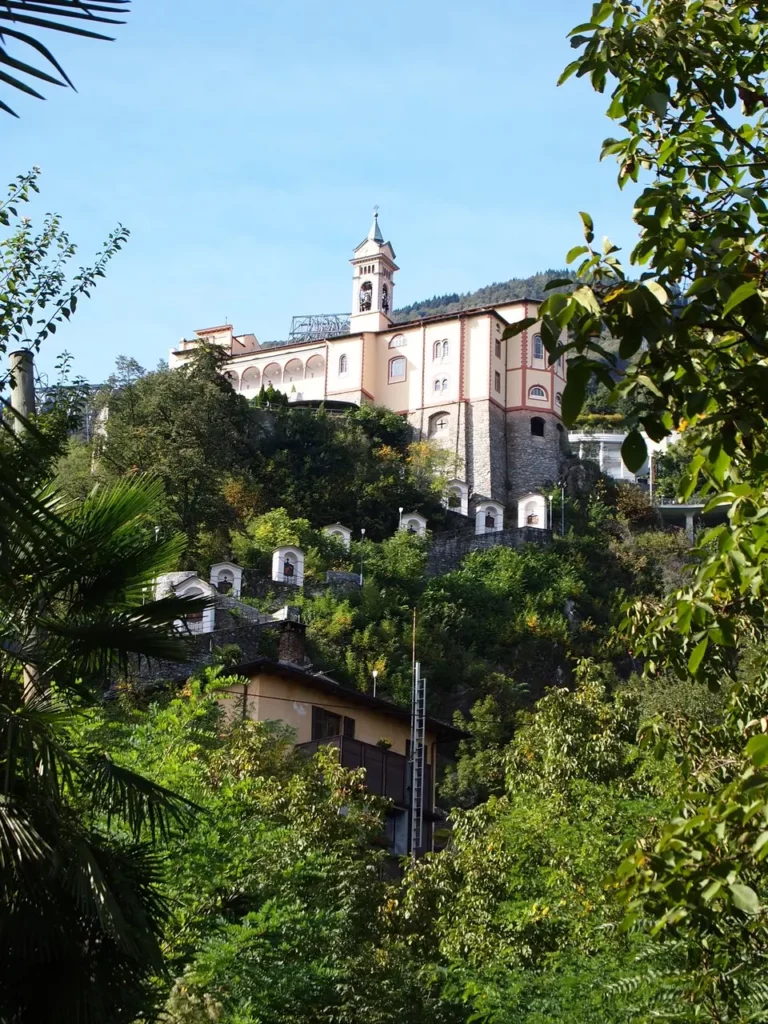

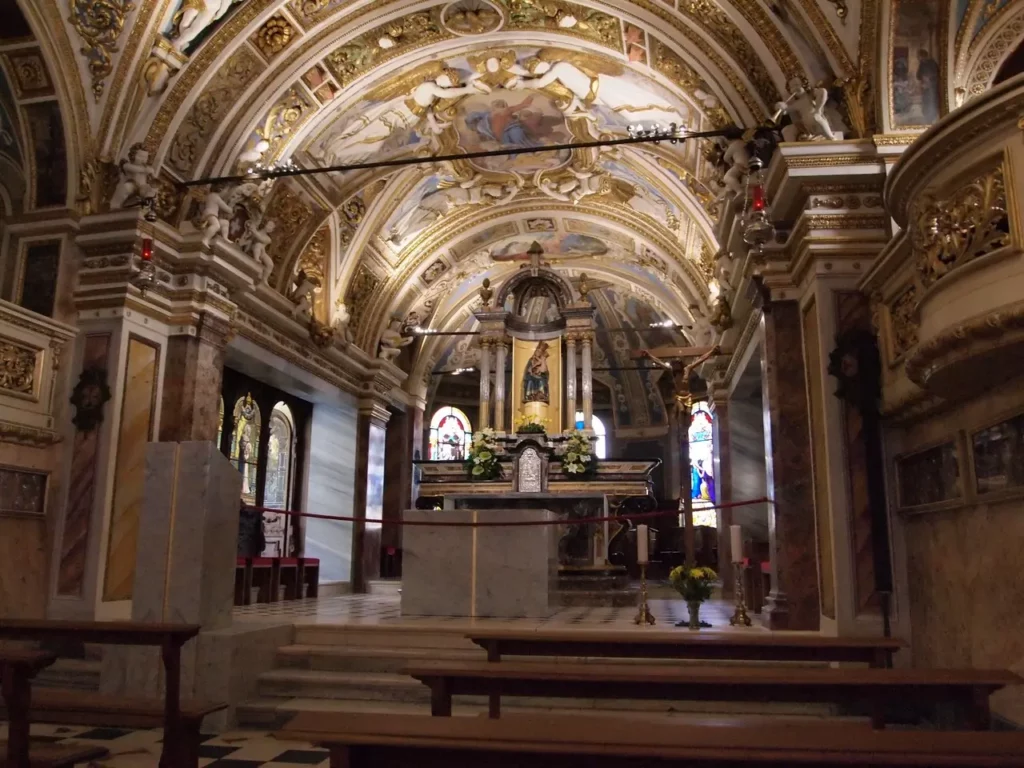
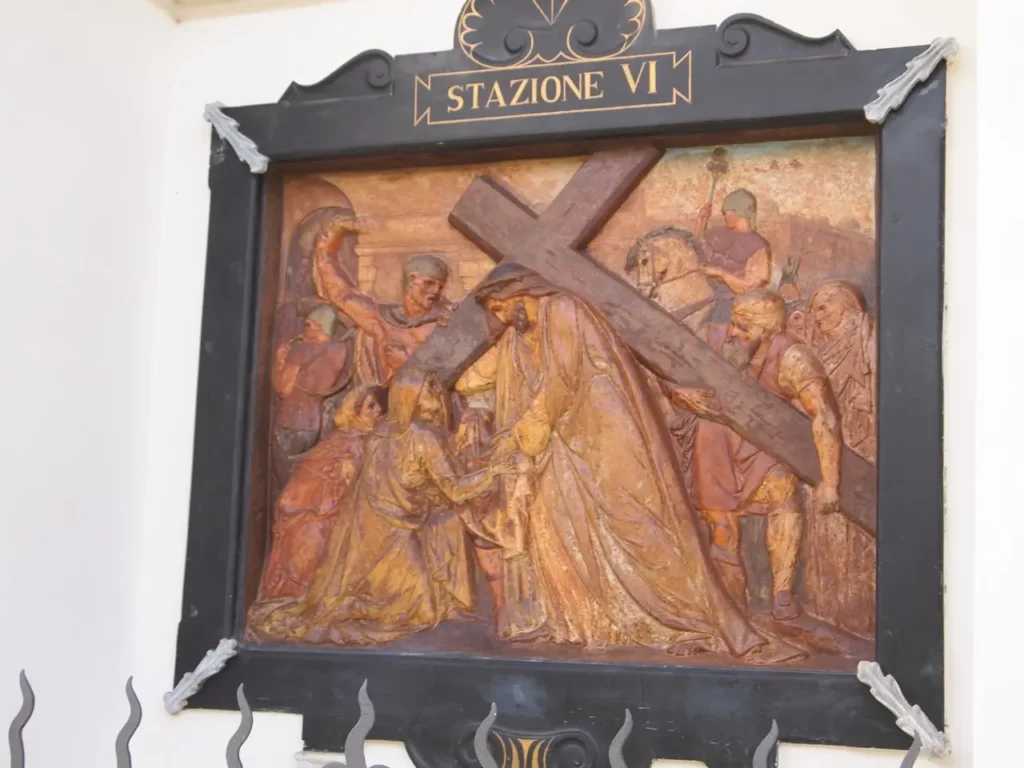


Cardada cable car
It is better to plan the ascent to the local mountain early in the morning. Later the sun from the south makes the mountains plain blue.
The lower station of the cable car is located near the upper station of the funicular in Orselina. Those arriving by car can get a 50% discount on local parking if they present a cable car ticket.
The cable car rises to the first observation point – Cardada. Then you need to change to a chairlift to the top of Cimetta.

Lungolago
Finally, as a pleasant walk, the guide recommends the lungolago – a promenade to the Camellia park or in the other direction, to Tenero.
I must say that their embankment is much worse as in Ascona. Many exotic trees have been planted, but they do not make any impression, the architecture is modern. The first park not far from the center towards the Lido and the Camellia Park (Giardini Jean Arp), was neglected.
Parco della Pace and the Camellia Park itself look good (open until 18.00), but it is worth going there (about 20 minutes walk from the pier) only in the camellia season (peak in March and April).
On the peninsula, in addition to the Camellia and Lido parks, there is also a large golf course and a bird of prey park (Falconeria), where bird shows are shown.
Ascona
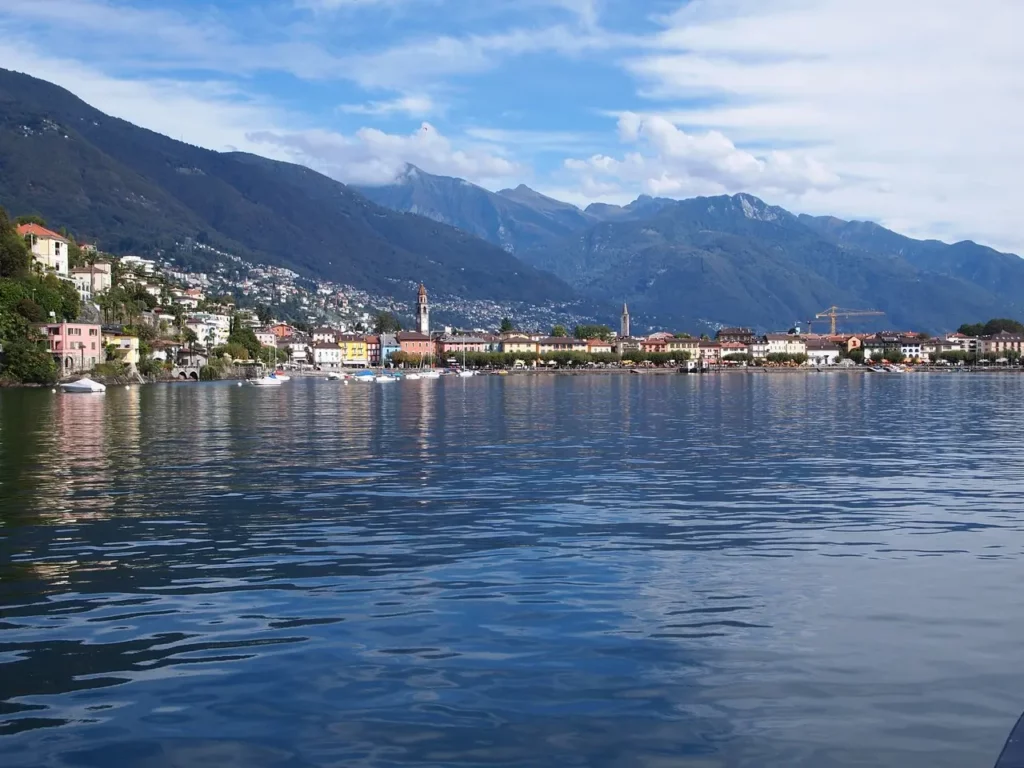
Ascona makes a very different impression than Locarno. It also has an old center with narrow streets, but it really is a center. Not like in Locarno – you can pass and not notice. Old houses overlook the embankment. Benches under plane trees, neat houses, restaurants. Musicians play in the streets and restaurants in the evenings. In one word – a classic set of a small but self-respecting resort town. Further from the center, there are many villas and modern apartment buildings surrounded by green gardens.
Ascona is often referred to with the words “luxury resort”. In general, having rented an apartment with a decent discount because of the end of the season, we did not feel it at all. Until we went to a restaurant. If in other parts of Switzerland it was possible to eat for 40-50 francs, then here – 75 fr. for similar dishes.

Once Ascona was a fishing village. But in the 19th and early 20th centuries it became a popular resort, attracting artists, writers and philosophers. On Mount Verita, where they once gathered, is now a park with a tea plantation. Nevertheless, the city has retained its character.
There are even fewer attractions here than in Locarno. If you have a lot of free time and desires, then you can see:
- former papal college in the Lombard style (16th century) with the Church of Santa Maria della Misericordia (14-15th centuries),
- Church of Saints Peter and Paul (16th century, near the embankment),
- Church of the Archangel Michael, built in the 17th century on the ruins of the castle that once defended the city,
- Modern Art Museum,
- the already mentioned tea plantation on Mount Verita.


Follow me
There are also Gambarogno Botanical Garden and garden on the Brissago Insel.
Next – Island Brissago, Verzasca valley.
Other posts about Ticino – #Ticino
Do you enjoy the site without cookies? This means that I work for you at my own expense.
Perhaps you would like to support my work here.
Or change your cookie settings here. I don’t use personalized ads

